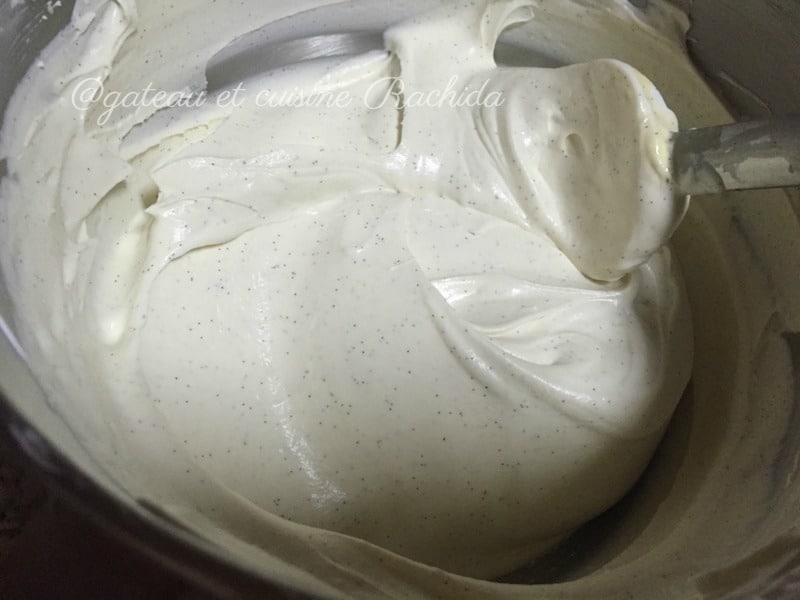
Vanilla Bavarian cream is a mousse made with a custard base, thickened with gelatin, to which whipping cream is added once cold but not set. It is used in many pastries. It is the main cream used to make Bavarian cake and charlotte cakes, for example, like this vanilla charlotte cake among others.
The french “crème bavaroise” is light, airy, creamy and flavored to taste. It can be made with chocolate or fruit. Here, it’s flavored with vanilla bean, which gives it an irresistible flavor.
Bavarian cream can be enjoyed on its own as a dessert. Simply pour it into individual molds or cups, let it set in the refrigerator, then unmold it. Served with a fruit coulis, it is reminiscent of panna cotta, combining lightness and creaminess.
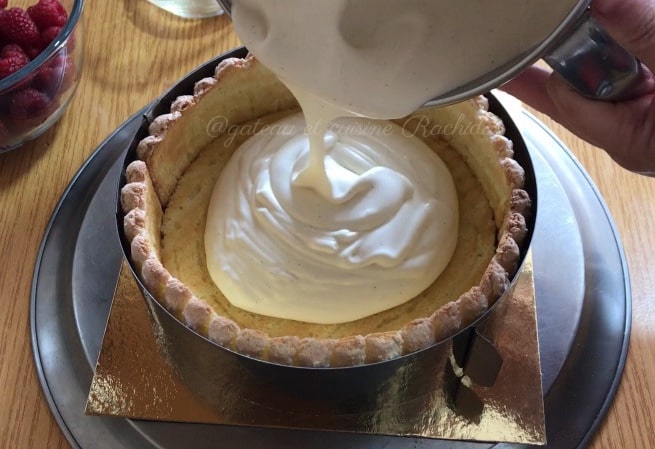
Table of Contents
Why make a Bavarian cream more or less firm?
It depends on the intended use. For a charlotte or a dessert, it’s better to have a soft Bavarian cream that spreads well in the mold. If you’re using molds with crevices, like some Silikomart molds, you’ll need a very soft Bavarian cream, slightly runny so that it fits the mold well. You can control the firmness of the
Bavarian cream By adjusting the whipped cream to be more or less firm or by adding the cold or slightly warm custard gradually. If you notice that the Bavarian cream becomes liquid, wait for a moment before adding the rest in the same way. If the Bavarian cream is too thick, you’ll end up with holes in your dessert.
It’s not aesthetically pleasing, and you won’t be able to achieve a perfect chocolate velvet effect or mirror glaze.![]()
On the other hand, if you’re using a cake ring or a smooth log mold, it’s better to have a firmer mousse so that you can cover the sides with a spatula before adding the inserts and biscuits.
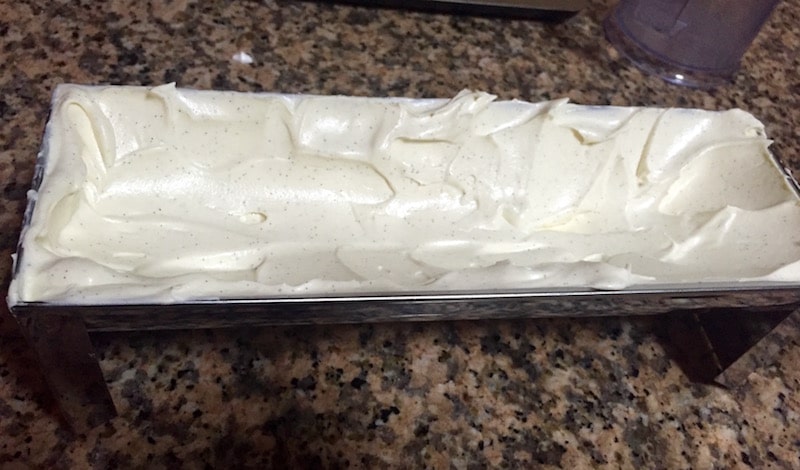
Bavarian cream for yule log
This vanilla Bavarian mousse is silky smooth and delicious. It is very light and airy. I used it in this dessert for example : Vanilla heart, milk chocolate and raspberry entremets and in the vanilla raspberry charlotte cake below.

Generally, the basic custard used for making Bavarian cream is not very sweet. It typically contains only 50 g of sugar (1.76 oz) for 250 ml (8.45 fl oz) of milk.. I find that this results in a Bavarian cream that is not sweet enough after adding unsweetened whipped cream. It’s up to you to decide how much sugar to add depending on what your Charlotte or dessert will contain.
With the quantity I provide, it’s neither too little nor too sweet.
Ingredients:
NB:You’ll find the printable recipe card at the end of the article.
Quantities for a 20–22 cm (9-inch) Charlotte or Entremets.
- 125 ml whole milk (4.23 fl oz)
- 125 ml heavy cream (4.23 fl oz) (you can use only milk if preferred)
- 90 g egg yolks (3.17 oz)
- 80 g sugar more or less (2.82 oz)
- 1 plump vanilla bean or more if you want visible seeds
- 300 ml very cold heavy cream (10.14 fl oz)
- 3 and a half gelatin sheets (7 g / 0.25 oz)
How to prepare a Bavarian cream?
Split the vanilla bean in half and scrape out the seeds.
Place the vanilla seeds and the leftover pod in the milk and cream.
Cover the saucepan with plastic wrap and heat without boiling.
Leave to infuse for 30 min.

When the milk has infused, soak the gelatin in very cold water for 15 min. Cover well with water.
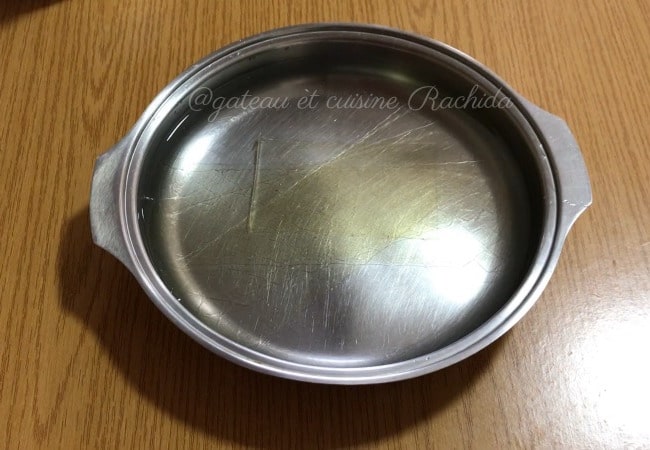
Meanwhile, whisk together egg yolks and sugar until smooth and pale.

Bring the milk to the boil and pour it through a fine mesh strainer over the egg yolks, whisked with the sugar.
Remove the vanilla pods, pressing them well to remove any remaining seeds.
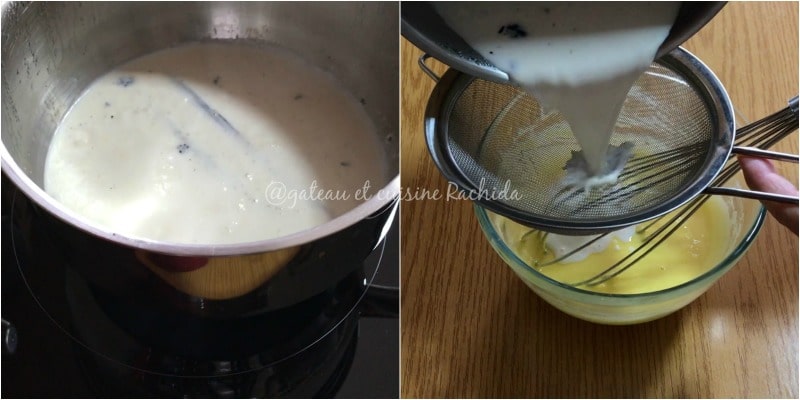
Mix well and pour it back into the saucepan.
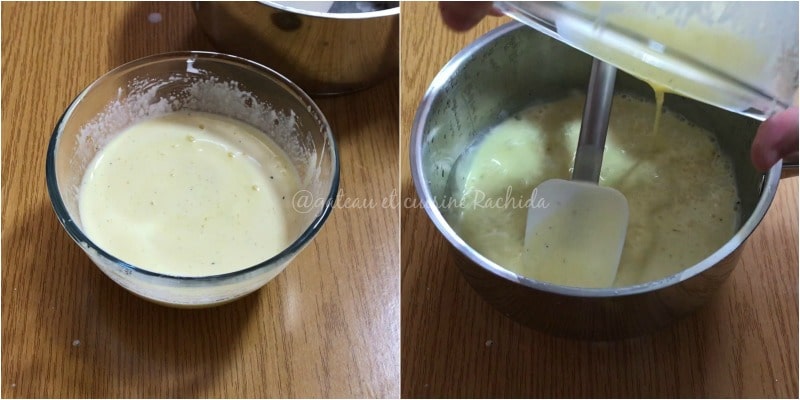
Bring to a boil over medium heat, stirring constantly with a spatula, reaching into all corners to prevent the cream from sticking to the bottom.
Whisk continuously in a figure-eight motion with the spatula until it coats the back of the spoon. This is when a finger drawn across the spatula leaves a trace. If you have a thermometer, the temperature should not exceed 82°C/84°C (179.6°F/183.2°F).
Remove the saucepan from the heat 2 times, and return to the heat while continuing to stir. In this way, the cream will thicken slightly without exceeding the required temperature. Il will be smooth and silky, with no lumps. Lifting it from the heat prevents it from quickly reaching 84°C ( 183.2°F).
Be careful not to let the cream simmer, let alone boil. Above 84°C the eggs will coagulate and the cream will fail.

Off the heat, add the squeezed gelatin. Mix well and strain through a sieve.
Let it cool, stirring occasionally to prevent a film from forming on the surface. Place the bowl over an ice bath to cool it quickly. Do not let it set.
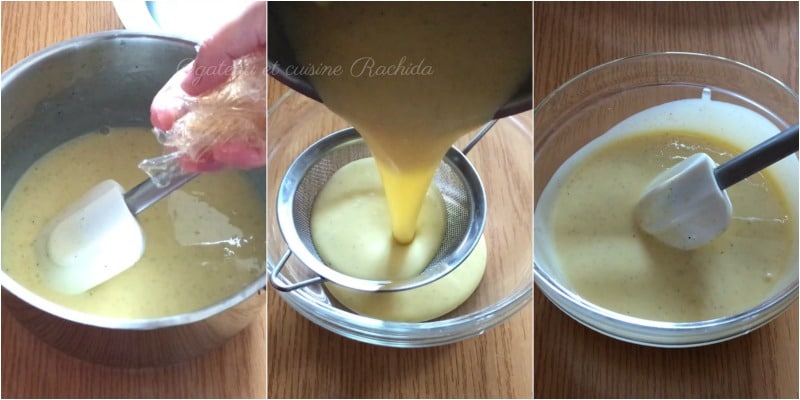
Whip the chilled heavy cream in the bowl of stand mixer fitted with a whisk attachment, gradually increasing the speed. It will whip better this way. Whip it until soft peaks form. It shouldn’t be too stiff unless you want to achieve a firmer mousse.
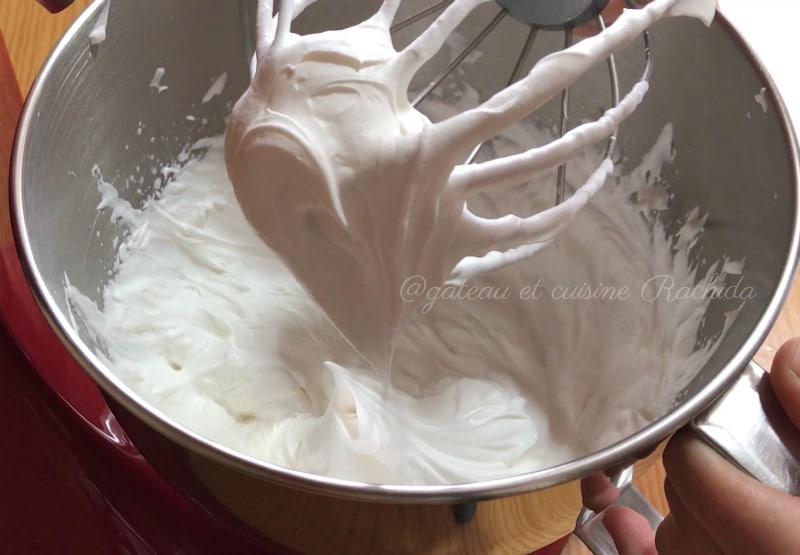
Once the custard has cooled to between 25°C and 38°C (77°F and 100°F) (see explanation below), add about three-quarters of it to the whipped cream.
Normally, the whipped cream is introduced into the custard, but I prefer to do it the other way round. The mixture blends better and more easily this way.

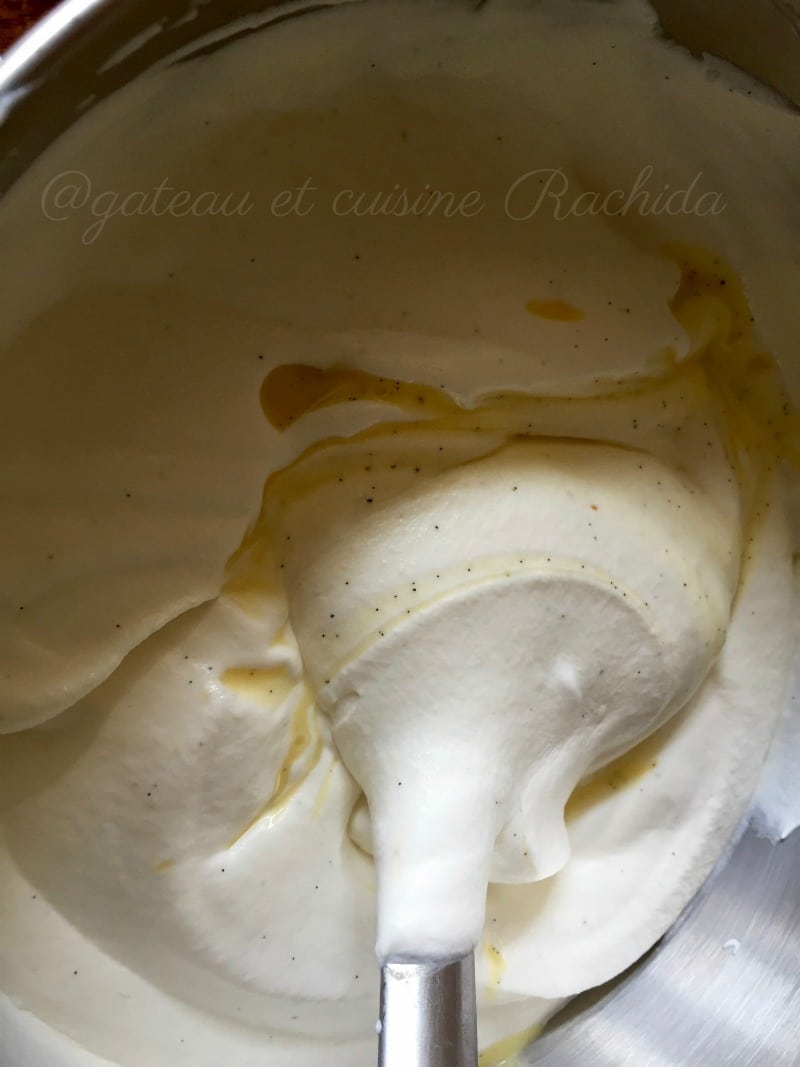
Gently fold in from bottom to top with a spatula.
Add the remaining custard in 3 times in the same way.
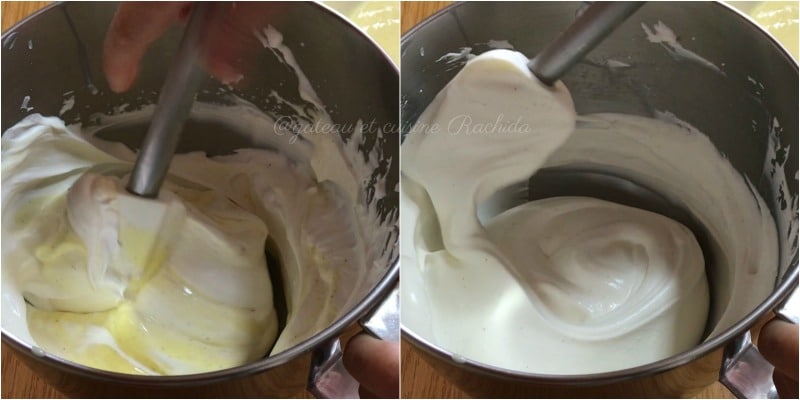
You can see below the texture of the Bavarian mousse you can obtain, more or less firm by adopting the method I also explained in the introduction.
➡️ Soft Bavarian mousse : use a slightly lukewarm custard with softly whipped cream (photo 1).
➡️ Fairly firm Bavarian mousse : use lukewarm or cold (but not set) custard with fairly firm whipped cream. Add the custard in several portions, and if you see the Bavarian becoming liquid, wait a moment before adding the rest in the same way (photo 2).
Use the Bavarian mousse immediately, before it sets.
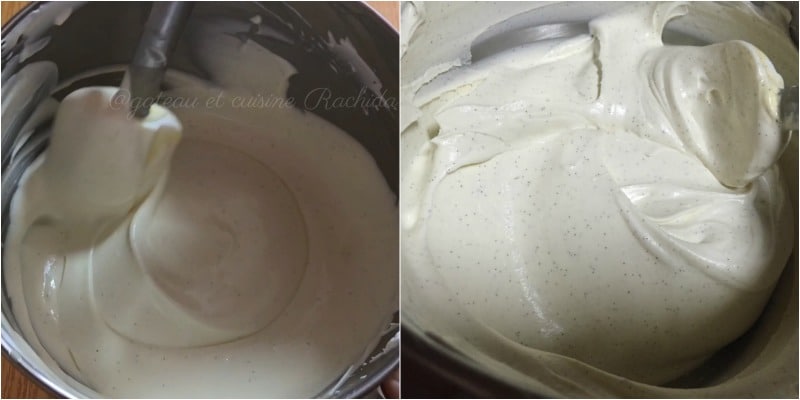
I hope this recipe will help you create your entremets and desserts.

Bavarian cream Recipe (Crème Bavaroise)
INGREDIENTS
- Quantities for a 20–22 cm (9-inch) Charlotte or Entremets.
- 125 ml whole milk (4.23 fl oz)
- 125 ml heavy cream (4.23 fl oz) (you can use only milk if preferred)
- 90 g egg yolks (3.17 oz)
- 80 g sugar more or less (2.82 oz)
- 1 plump vanilla bean or more if you want visible seeds
- 300 ml very cold heavy cream (10.14 fl oz)
- 3 and a half gelatin sheets (7 g / 0.25 oz)
PREPARATION
- Split the vanilla bean in half and scrape out the seeds.
- Place the vanilla seeds and the leftover pod in the milk and cream.
- Cover the saucepan with plastic wrap and heat without boiling.
- Leave to infuse for 30 min.
- When the milk has infused, soak the gelatin in very cold water for 15 min. Cover well with water.
- Meanwhile, whisk together egg yolks and sugar until smooth and pale.
- Bring the milk to the boil and pour it through a fine mesh strainer over the egg yolks, whisked with the sugar.
- Remove the vanilla pods, pressing them well to remove any remaining seeds.
- Mix well and pour it back into the saucepan.
- Bring to a boil over medium heat, stirring constantly with a spatula, reaching into all corners to prevent the cream from sticking to the bottom.
- Whisk continuously in a figure-eight motion with the spatula until it coats the back of the spoon. This is when a finger drawn across the spatula leaves a trace. If you have a thermometer, the temperature should not exceed 82°C/84°C (179.6°F/183.2°F).
- Remove the saucepan from the heat 2 times, and return to the heat while continuing to stir.
- In this way, the cream will thicken slightly without exceeding the required temperature. Il will be smooth and silky, with no lumps. Lifting it from the heat prevents it from quickly reaching 84°C ( 183.2°F).
- ⚠️ Be careful not to let the cream simmer, let alone boil. Above 84°C the eggs will coagulate and the cream will fail.
- Off the heat, add the squeezed gelatin. Mix well and strain through a sieve.
- Let it cool, stirring occasionally to prevent a film from forming on the surface. Place the bowl over an ice bath to cool it quickly. Do not let it set.
- Whip the chilled heavy cream in the bowl of stand mixer fitted with a whisk attachment, gradually increasing the speed. It will whip better this way. Whip it until soft peaks form.
- It shouldn't be too stiff unless you want to achieve a firmer mousse.
- Once the custard has cooled to between 25°C and 38°C (77°F and 100°F) (see explanation below), add about three-quarters of it to the whipped cream.
- Normally, the whipped cream is introduced into the custard, but I prefer to do it the other way round. The mixture blends better and more easily this way.
- Gently fold in from bottom to top with a spatula.
- Add the remaining custard in 3 times in the same way.
- You can see below the texture of the Bavarian mousse you can obtain, more or less firm by adopting the method I also explained in the introduction.
- ➡️ Soft Bavarian mousse : use a slightly lukewarm custard with softly whipped cream (photo 1).
- ➡️ Fairly firm Bavarian mousse : use lukewarm or cold (but not set) custard with fairly firm whipped cream. Add the custard in several portions, and if you see the Bavarian becoming liquid, wait a moment before adding the rest in the same way (photo 2).
- Use the Bavarian mousse immediately, before it sets.
- I hope this recipe will help you create your entremets and desserts.
Thank you for visiting my blog and your comments.
